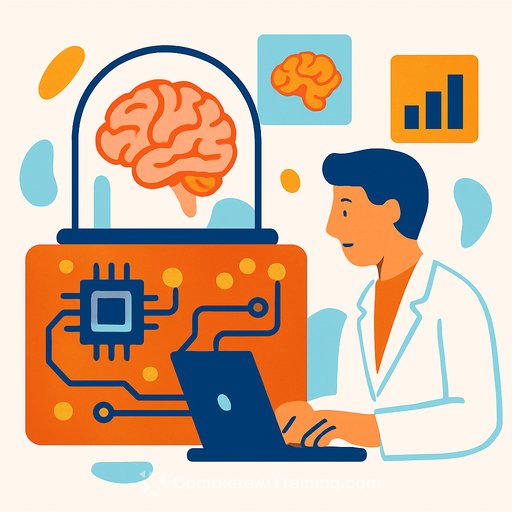Mini human brains as compute: inside biocomputing's next phase
A handful of labs are building "wetware": living neural organoids wired to electrodes and trained to compute. In Vevey, Switzerland, FinalSpark is pushing for living servers that learn like biological systems and could run on a fraction of the energy of today's AI stacks.
The pitch is simple: neurons are nature's learning hardware. Grow them into clusters, connect them to interfaces, and shape behavior with stimulation. The reality is complex, slow, and fascinating.
From skin cells to organoids
FinalSpark starts with stem cells derived from human skin cells from accredited suppliers in Japan. Donors are anonymous; cell quality is screened because experimental stability depends on it.
After months in culture, the cells self-organize into tiny white spheres-organoids composed of neurons and supporting cells. They lack the scale and architecture of a brain, but they share its functional building blocks.
Interfaces and signals
Once mature enough, organoids are placed on electrodes and stimulated. A keyboard press triggers a pattern of electrical input; if the interface cooperates, you'll see a small spike train on a screen in response.
Responses are inconsistent. Stimulations can go quiet and then deliver a short burst of activity. The team treats these behaviors as data, iterating toward protocols that induce plasticity and stable input-output mappings (for example, simple classification tasks).
The bottleneck: keeping tissue alive
Unlike a brain, organoids have no blood vessels. Nutrient and oxygen diffusion limit size, health, and learning potential. This is the biggest constraint researchers face today.
FinalSpark reports organoid viability up to about four months. Near the end, they often record brief surges in activity during the final seconds. Across five years, the lab has logged thousands of such events while refining media, perfusion, and handling.
Where this fits
Biocomputing will complement-rather than replace-silicon. It may offer gains in sample-efficient learning and energy use for certain tasks, while silicon maintains advantages in scale, precision, and reliability.
Parallel efforts highlight the breadth of applications. Cortical Labs showed neurons learning to play Pong. At Johns Hopkins, teams are building mini-brains to study information processing for neurological research, including Alzheimer's and autism. See Organoid Intelligence from Johns Hopkins for context: Johns Hopkins Organoid Intelligence.
On the systems side, neurotechnology groups anticipate niche roles where living networks' adaptive dynamics matter most. For a perspective on interfaces and measurement, explore Imperial College London's Center for Neurotechnology: Center for Neurotechnology.
What to track if you work in science and research
- Cell sourcing and QC: standardized iPSC lines, passage number controls, and reproducible differentiation protocols.
- Interfaces: multi-electrode array design, stimulation parameters, impedance, and signal-to-noise strategies.
- Training signals: encoding tasks via patterned stimulation, feedback schemes, and readout stability over weeks.
- Metrics: spike rate distributions, synchrony, plasticity markers, learning curves, and energy per inference.
- Sustenance: microfluidic perfusion, gas exchange, and efforts toward vascularization or engineered scaffolds.
- Scale-out: arrays of organoids, routing, synchronization, and error correction across many biological nodes.
- Governance: donor consent, data provenance, and clear criteria for experiment start/stop to protect research integrity.
Open questions shaping the field
- How to maintain healthy tissue for six months or more without vasculature? Can microvasculature or perfusable scaffolds close the gap?
- What is the most effective "programming" protocol for reliable plasticity-supervised stimuli, reinforcement, or closed-loop control?
- How do we benchmark fairly against silicon on energy, latency, accuracy, and maintenance cost?
- What standards will enable reproducibility across labs (media, electrode geometries, stimulation templates, and data formats)?
Practical next steps
- Follow labs publishing open protocols and datasets; compare stimulation/recording pipelines before building your own setup.
- Prototype analysis with existing MEA datasets to refine your metrics and modeling before touching biological material.
- Plan for long-haul experiments: automation for feeding, monitoring, and anomaly detection reduces variability.
If you want structured training to bridge AI methods with experimental work, explore curated programs here: Latest AI Courses.
Your membership also unlocks:






